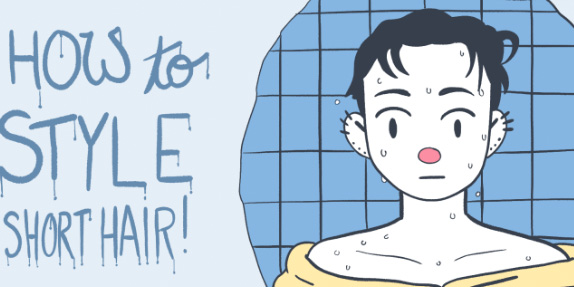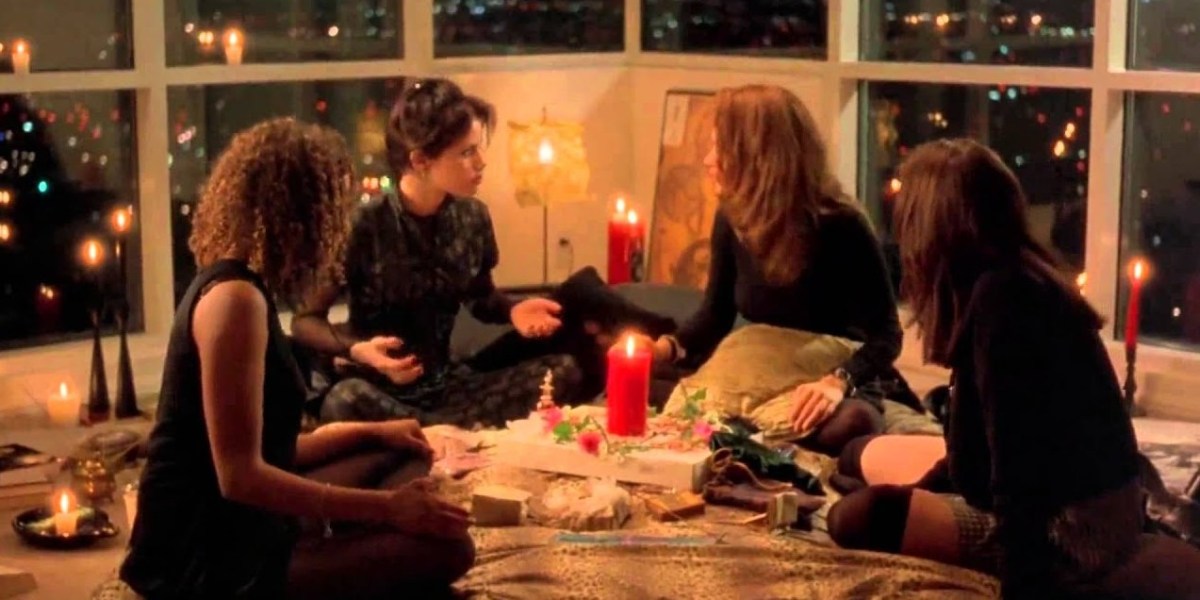Lena Waithe recently revealed a new haircut, having shaved off her locks to reveal a smooth crown that just makes her smile all the more electric. She explained why to Variety:
“I felt like I was holding onto a piece of femininity that would make the world feel comfortable with who I am,” Waithe said. “I think I thought for a long time, ‘Oh, if I cut my hair, I’ll be a stud, I’ll be — in the gay world, there’s a lot of categories — I’ll be a stud or I’ll be a butch,’ and I’ve always thought, ‘Well, no, I’m not that, I’m still soft,’ and I said, ‘Oh, I gotta put that down ’cause that’s something that’s outside of me.’…If people call me a butch or say ‘she’s stud’ or call me sir out in the world — so what? So be it. I’m here with a suit on, not a stitch of makeup, and a haircut — I feel like, ‘Why can’t I exist in the world in that way?’”
Like Lena, I have a lot of feelings about hair and I imagine you might too. Of course, context matters. Race, gender, and geography all impact how people perceive the visual signals we give off, and some choices are riskier than others. But no matter what, for so many queer people hair is integral to our self-understanding and outward presentation. As I wrote in November 2016, haters are going to harass us and discriminate no matter what’s on our heads. We might as well look fly while we fight them off!
In tribute to Lena, a few Autostraddle staffers got together to share the moment when we finally realized what OUR cut was. Share yours in the comments!
Carrie, Staff Writer
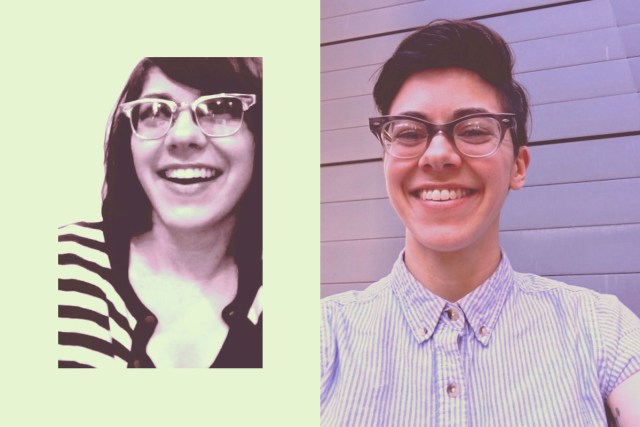
I’ve gone back and forth with my hairstyle a bunch of times. I started out a short-haired kid and then grew it down to my butt, held steady at chin-length through middle school, cut it all off senior year, grew it out again in college… you get the idea. High school was the first time I got anywhere close to the haircut I have now while also being openly gay, but the two weren’t related in my head at the time. I think the haircut that mattered most, the one that told me I was never going back, was the first cut I got at a barber rather than a salon. That marked the first time I didn’t feel like I needed to justify or apologize for anything while in the chair. I got to speak my language and people understood it. They didn’t question whether I knew what I was saying. What a relief.
My girlfriend looked at my “before” picture just now and said “You just look weird to me like that! You don’t look like you!” And I think that’s the thing for me — I just wasn’t who I am behind that hair sheet. (I know how lucky I am to have really thick hair but seriously, it looks like a small animal died on the floor even when I get a haircut now. When it was long, it was unbearable.) Gender presentation certainly plays a role in my haircuts and vice versa, but there’s also just a sense of pride in wanting to show my face to the world, honest and open and out of hiding.
Creatrix Tiara, Staff Writer
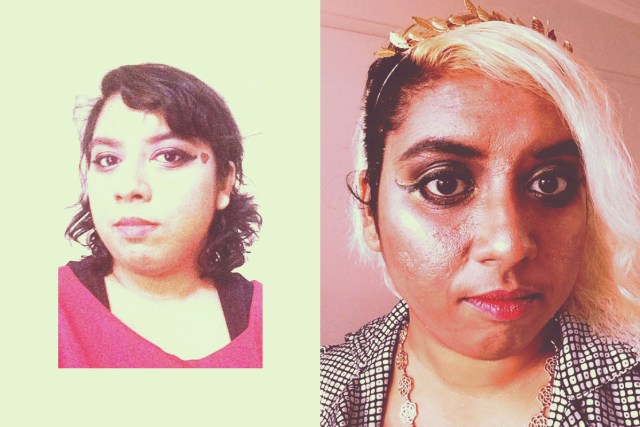
I have a complicated relationship with hair and queerness, particularly the idea of the Alternative Lifestyle Haircut as a marker of my sexuality or gender. I’ve always been pretty open to experimentation with my hair, even in Malaysia where there’s SUCH a stigma against non-straight hair that salons have claimed that “coloured hair won’t suit you because your hair is too wavy.” (Lies, of course.) I’ve never really been fond of long hair (I feel like I have wet noodles on my head) but I’m down to try all kinds of styles and colours and cuts.
I however deeply resent the idea that my queerness is judged on my hair. When my hair looks relatively “normal,” as in undyed and not cut in a particular way, I’ve had people straight up question me “but are you really queer???”. Yet when I have “conformed” to this Alternative Lifestyle Haircut, I still don’t get taken seriously as queer. My suspicion is that my brown skin automatically creates a barrier: there’s no way you’re queer if you’re Foreign, no matter what you wear. (That being said, even QPOC quiz me on my incongruous hair.)
Surely I shouldn’t have to PROVE who I am based on some standards I had no say in creating? I should be able to completely lean into the Traditional Bengali Girl look if I wanted (long black hair in braids, no side shaves or bright colours) and STILL BE READ AS QUEER.
My current hair is blonde with a side shave — think Sombra but, well, blonder. I absolutely LOVE the blonde, it’s my favourite hair colour on me! I’d usually gone for purples and reds, as well as teal for a few months (which also looked great), but had been curious about blonde ever since I saw how good it looked on my video game avatars that have my skin tone. My then-best-friend, who I’d have hair-dying parties with (he always dyed his hair purple), did it for me last year — pretty much 1 or 2 rounds of 40-vol bleach and it’s great. (This friend and I had a big falling out so the hair’s become bittersweet, but I’ve had other friends step in to help.)
It’s very unusual for South Asians to have blonde hair, and I’m bemused at the hot takes that claim that Asians go blonde because we want to get closer to Whiteness — come on, please. I feel most like myself when blonde. It’s fun and striking and memorable.
I actually like it yellow, almost cartoony, which makes it surprisingly difficult to maintain as so many shampoos and dyes want to REMOVE the yellow from one’s blonde hair. I don’t want ash or platinum! I WANT BETTY COOPER! One solution has been a tiny smidgen of yellow hair dye in a lot of conditioner, which gives me just the right shade without looking like I have yellow paint in my hair. But if you have any suggestions let me know.
Audrey, Contributor
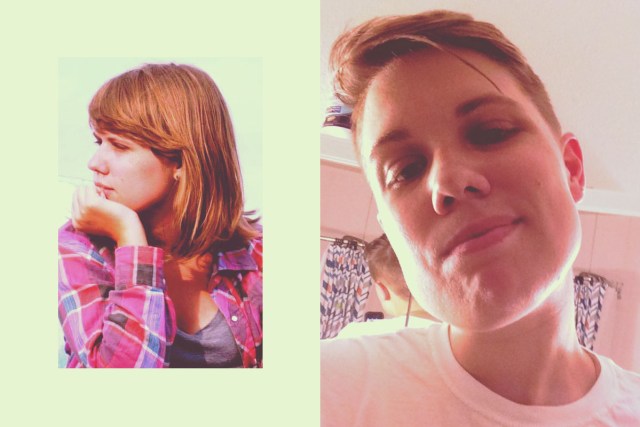
As I child, I would shriek while my mom ran a paddle brush through my butt-length blonde hair. She always threatened, “be careful or I’ll cut your hair into a pixie!” Starting in middle school, I cut my hair shorter and shorter until I had a pixie of my own freewill. That begin the eternal cycle of cutting it short and growing it out into a bob and back again. I kept trying and trying to find the magic scissor snip that would make me feel like a coherent person. After two years of letting it grow to my shoulders and startling myself every time I looked in the mirror, I called up a salon and explained that I would be cutting my hair “from pretty long to pretty short.” She still wasn’t expecting me to ask for a razor fade — I was living in Nicaragua at the time and that just wasn’t something women did. She gave me a cute cropped cut, almost good enough. I felt lighter, freer, and happier. But it still wasn’t quite right.
My friend recommended a barber that gave great $4 cuts that was right by my work. My barber there was less hung up about gender, and she gave me the only kind of razor fade she was trained to give. At the end of that cut, I recognized myself. From that point on, my monthly fade has been a beloved and necessary ritual. Wynn, my fiance, can tell my brain is acting up if I go too many weeks without a haircut. That first haircut wasn’t a conscious step in my transition but rather a precursor. It helped me realize I had work to do, whether I was ready or not. Shortly after I got it, I saw an ex who was surprised. He asked what fade I got, and when I told him he looked sheepish when he responded that even he didn’t get it cut that short. I felt smug. His discomfort made me all the more committed to belonging to this haircut, to letting it belong to me.
Al(aina), Staff Writer

The first time I cut my hair, I was fifteen. My best friend from middle school had cancer and had just lost her hair after chemo treatment and I cut off my relaxer so that she wouldn’t be the only person going back to school in the fall with short hair. The first time I cut my hair in a gay way was at the end of my first year of undergrad. Looking back on it, it was an objectively bad haircut — mostly buzzed on the sides, with a weirdly rectangular frohawk in the middle — but it was the first time I felt like I looked hot. It was the first haircut that I’d gotten that wasn’t traditionally feminine. I felt for a moment, I escaped the male gaze by doing something so antithetical to what I’d been taught was how women should present themselves. Not to be dramatic, but I think I saw myself clearly for the first time after that haircut; I thought to myself, “oh, this is how I’m supposed to look.” And I liked the person I saw.
I’ve buzzed my head at least once a year since then. Now, I keep the sides buzzed, but I’m trying to grow out the top. My hair has been a visible metaphor for starting over, but I think there’s something important for me to learn about slow growth, and holding onto things, even when they’re hard. So much of my life as a queer person is YOLO because we’re all oppressed in a variety of ways, so I might as well get that tattoo, or cut my hair because I’ve gotta live it up! But also, maybe living it up can be waiting patiently and enjoying and observing small growth. Maybe I’m putting too much pressure on my hair, but I really do believe it’s trying to teach me something, and I’m trying to let it.
Raquel, Contributor
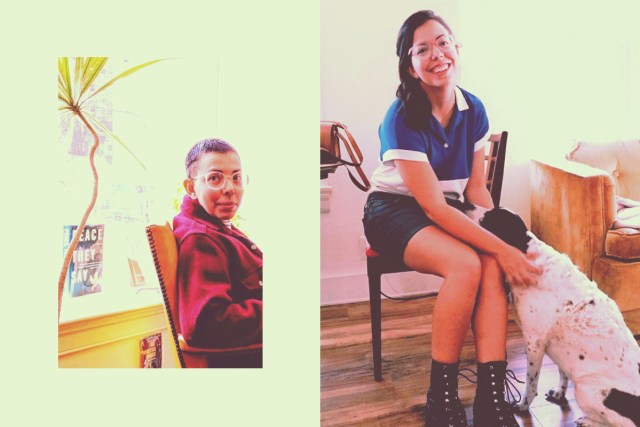
The first time I cut all my hair off, I walked into the salon with my first girlfriend and a photograph of Sarah Quinn in a bowl cut. I had long, gorgeous mermaid hair and I was nervous to cut it all off, but more so I was anxious to be perceived as visibly queer. At the time I was compensating for my straight-passing hairstyle by going full baby gay style: buttons ups, ties and bowties, suspenders, and doc martens, often all at once. It was a lot. The haircut actually allowed me to chill a little, and explore femming it up a little. I learned I fluctuate a lot in how androgynously I want to look and dress, and I learned to lean into that. Some time after that, I bleached my head blonde, and some time after that I began the long, slow process of growing my hair back long again.
Over the course of a year, I got to shoulder-length before I cut it all off again, this time because I was moving jobs and cities and, again, wanted to present more visibly queer. Now that I’ve been at the new job and the new city for more than eight months, after a head shave or two, I’ve again begun the long, slow process of growing my hair back out. Right now, it’s rocking something of an 80s girl mullet…and I can’t wait to have my long, gorgeous mermaid hair again. And, probably, then to chop it all off. It’s the circle of queer life, my friends.
Lex, Staff Writer
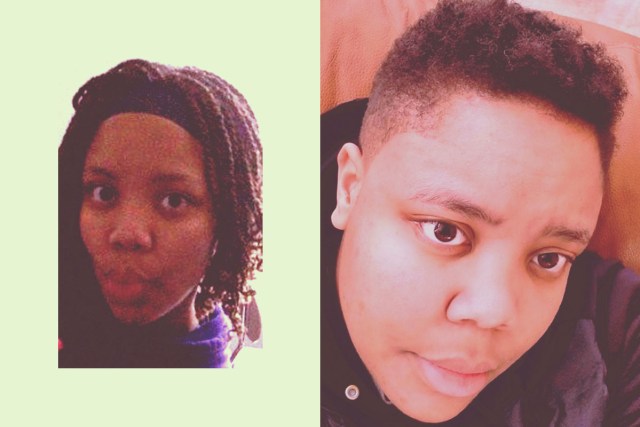
I think we mostly know about my hair journey but I don’t think I felt the moment of truth until I looked in the mirror until after the first big chop. My cousin cut and dyed my hair into a mohawk in 2012 because it still made me feel like, if worse came to worse, I’d just have to wait for the sides to come back in and I could get braids again. The decision from braids to mohawk wasn’t so difficult because I was saving money by not having to get my hair braided every two months, I wouldn’t have to sit in a chair for 7+ hours to get my hair done while low key panicking, and I didn’t really have to see white people anymore so I didn’t have to explain how my hair worked or worry about standing out any more than I already did. I didn’t forsee it, but it took a lot of weight of my shoulders? I didn’t have to worry about my real hair being seen and the constant worry of being “found out” (sounds familiar right?). Well, about a year and a half after the mohawk, I asked my barber (who at the point of this writing is one of the only men I will ever trust) to cut off the back and just give me a fade. A few visits later, I asked him to shave everything as close as he could. I haven’t looked back since. Honestly I want to near shave my head a la Syd soon but I have to get some things in order first.
Each of these steps took me a while to get to because I always worried about my family and friends knowing I was this butch and wanted to be butch-er (I’m opposite of Lena in that I want to be a stud and butch as hell). I was afraid of them calling me out for being such a lesbian when it inconvenienced them and that my obvious lesbian-ness would get me hurt. (There’s also some gender stuff in there because as I’ve gotten closer to understanding I’m non-binary, I’ve wanted to present a lot butch-er than I ever anticipated and that worries me in regards to my family who I’m not really out to.) But! I’ve decided the kind of people who want to hurt me for being lesbian and black would figure out a way to do it regardless, so I may as well look hot as fuck and feel good about who’s looking back at me in the mirror. Honestly shout out to Lena because I didn’t know she could be any finer and she just keeps stepping up the game so now I gotta catch up.
Eli, Tech Intern
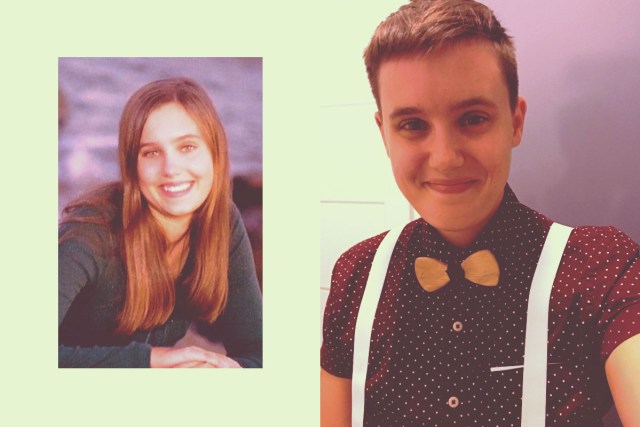
I was 19 years old, working a summer job in North Carolina, and trying to figure out how to be gay in a world I was not yet out to. One night, we all got very drunk together: the twelve interns, and two male grad students in charge of us. One of the grad students spent the whole night hitting on me, and got very sulky and dejected when I turned down his advances. I felt invisible, like no one understood me, and mostly like I didn’t want my physical appearance to invite the attention of straight men. The next morning in a hungover daze, I walked into a hair salon and told them to cut all my hair off. It was my small act of gay symbolism, an act of courage from the closet.
My sexuality and gender presentation have both changed in significant ways since that summer, but my hair hasn’t. Someday I would like to feel comfortable enough in my gender presentation to grow it out again, but I think that day is a very long ways off. And blessedly, most straight men have gotten the message.






